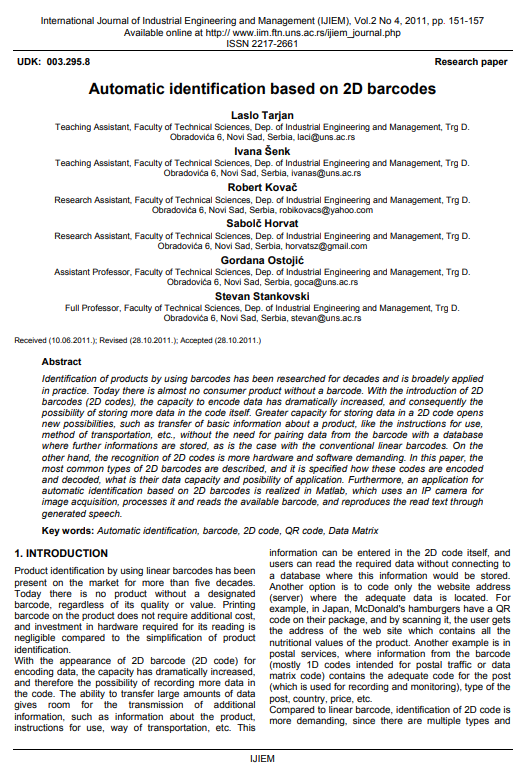
Published 2011-12-30
abstract views: 34 // FULL TEXT ARTICLE (PDF): 0
Keywords
- Automatic identification,
- barcode,
- 2D code,
- QR code,
- Data Matrix
How to Cite
Copyright (c) 2023 International Journal of Industrial Engineering and Management

This work is licensed under a Creative Commons Attribution 4.0 International License.
Abstract
Identification of products by using barcodes has been researched for decades and is broadely applied in practice. Today there is almost no consumer product without a barcode. With the introduction of 2D barcodes (2D codes), the capacity to encode data has dramatically increased, and consequently the possibility of storing more data in the code itself. Greater capacity for storing data in a 2D code opens new possibilities, such as transfer of basic information about a product, like the instructions for use, method of transportation, etc., without the need for pairing data from the barcode with a database where further informations are stored, as is the case with the conventional linear barcodes. On the other hand, the recognition of 2D codes is more hardware and software demanding. In this paper, the most common types of 2D barcodes are described, and it is specified how these codes are encoded and decoded, what is their data capacity and posibility of application. Furthermore, an application for automatic identification based on 2D barcodes is realized in Matlab, which uses an IP camera for image acquisition, processes it and reads the available barcode, and reproduces the read text through generated speech.
Article history: Received (10.06.2011); Revised (28.10.2011); Accepted (28.10.2011)

